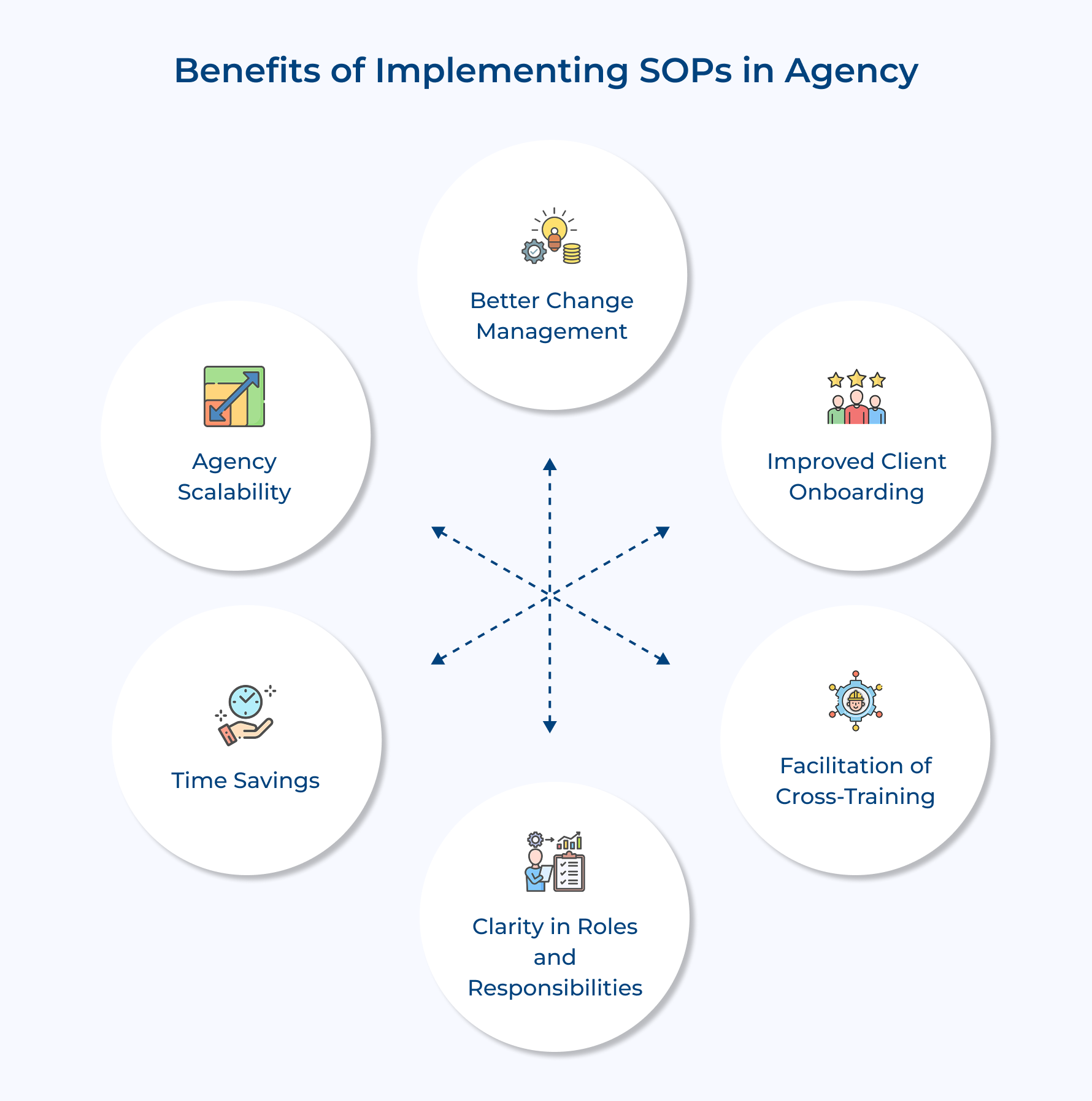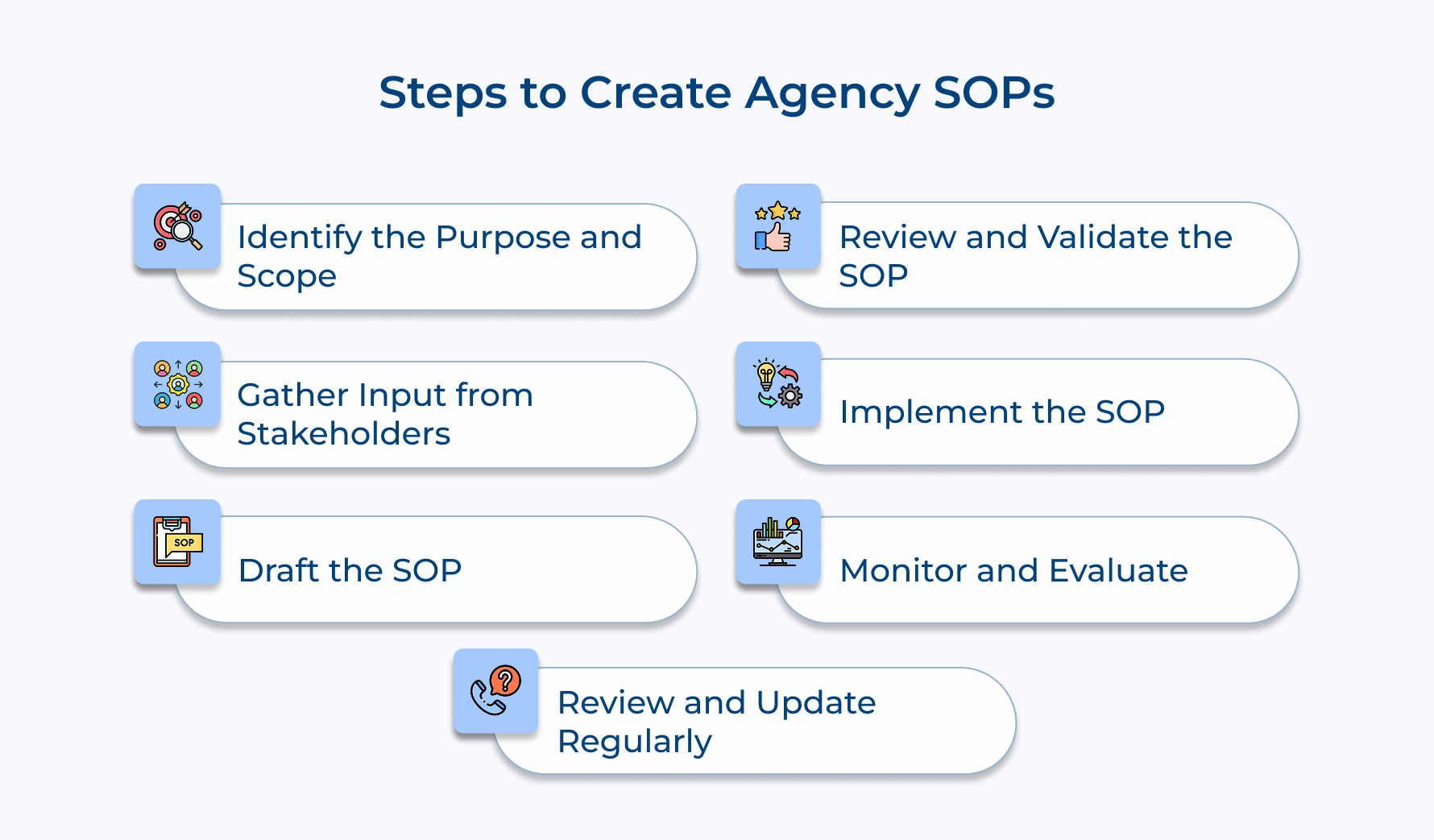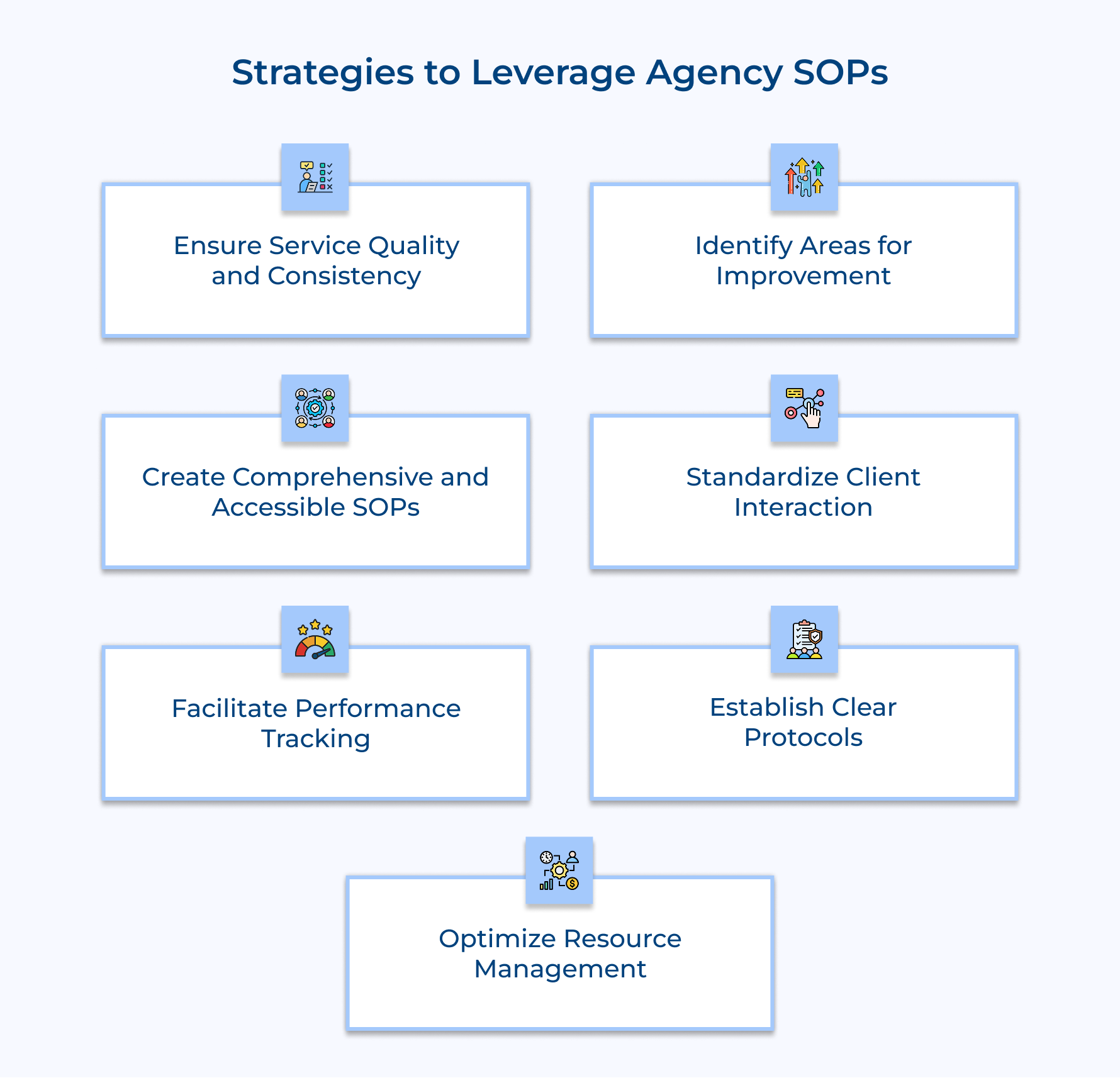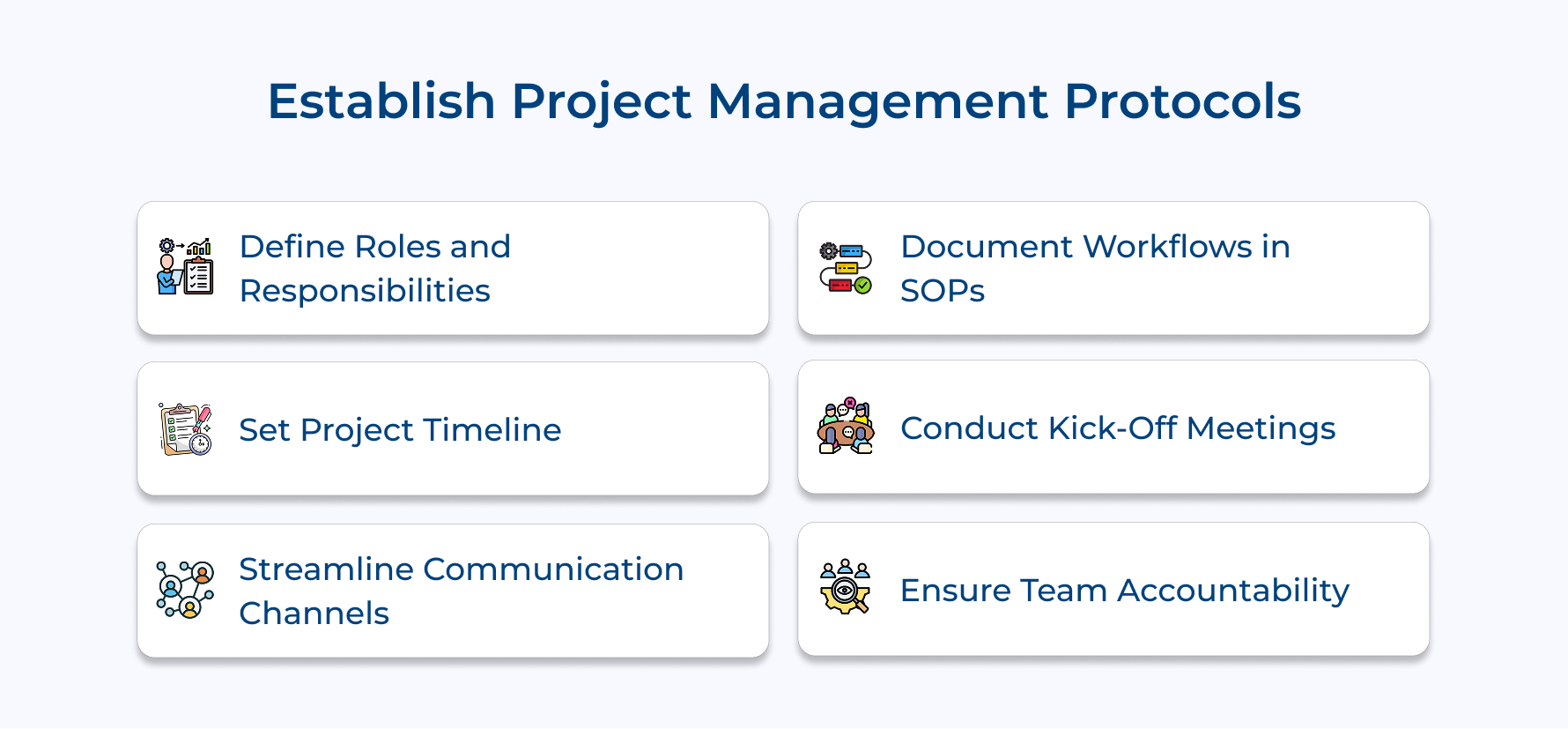Essential Guide to Agency SOPs: Scale & Boost Efficiency
- What is an Agency SOP?
- Benefits of Implementing SOPs in Your Agency
- 7 Steps to Create Effective Agency SOPs
- Checklist: Leverage Agency SOPs for Business Growth
- Best Practices for Maintaining SOPs
- Challenges of Developing and Implementing SOPs
- Harnessing agency SOPs for Growth and Efficiency
- FAQs about Agency SOPs
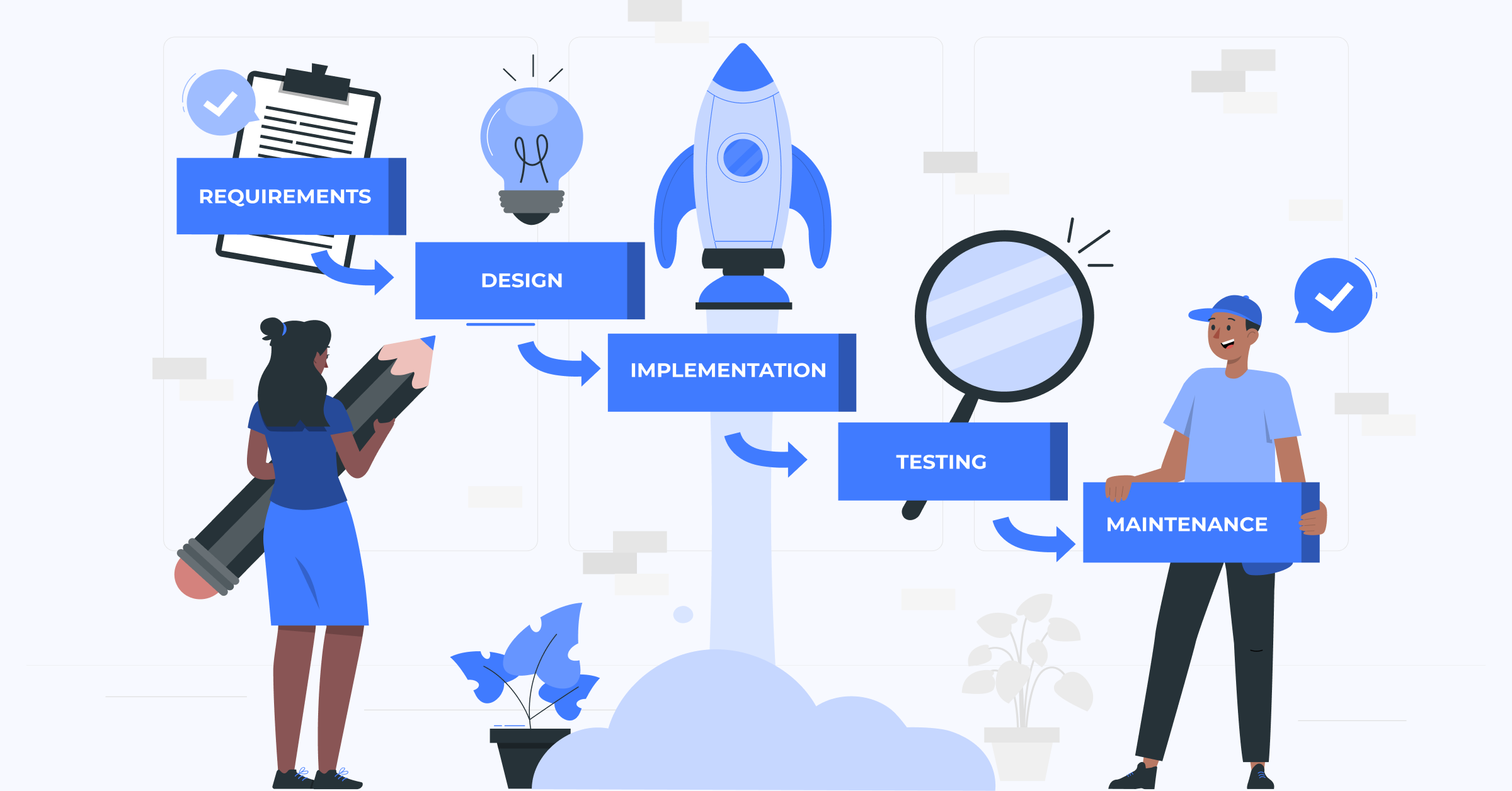
Key Highlights
The only thing that holds the ground when an entire agency gets chaotic is a robust Standard Operating Procedure!
But let’s be honest—many of us face those frustrating moments when processes go haywire, leading to mistakes, wasted time, and stressed-out teams. It’s a tough spot that can really impact client satisfaction and our overall success.
Professional agency SOPs set clear guidelines that help everyone get on the same page. It turns chaos into a smooth sailing process, making sure everyone works efficiently.
Implementing SOPs can seem daunting, but the benefits are well worth the effort. Let’s explore how you can transform your agency’s performance and support sustainable growth.
What is an Agency SOP?
An agency Standard Operating Procedure (SOP) is a set of step-by-step instructions compiled to help the team carry out complex routine operations.
SOPs aim is to
- Achieve efficiency with quality output
- Uniformity of performance
- Reducing miscommunication
- Avoid non-compliance with industry regulations
SOPs are essential for agencies to ensure consistency in executing processes, reducing errors, and training new employees. A well-written SOP can be used as a performance management tool as well as serve as an effective training resource.
Key objectives:
- Standardization: Ensure processes are performed the same way each time.
- Compliance: Maintain adherence to legal, regulatory, and company requirements.
- Training: Provide detailed instructions for new employees to learn processes.
Benefits of Implementing SOPs in Your Agency
Implementing SOPs aims to enhance operational efficiency, leading to improved quality along with client satisfaction. Here are the benefits of agency SOPs:
Better change management: You get a clear roadmap for navigating change. Documenting current processes makes it easier to identify areas for improvement. SOPs help in implementing updates smoothly, minimizing disruption to operations.
Improved client onboarding: Standardized onboarding procedures ensure that all clients receive consistent, high-quality service from the start. The streamlined process reduces the likelihood of missed steps or miscommunication.
Facilitation of cross-training: Well-documented SOPs serve as a valuable training resource, enabling employees to learn new skills. Increased team flexibility and resilience result from cross-training.
Clarity in roles and responsibilities: Each team member’s tasks within a process are clearly defined by SOPs. Accountability is promoted which also reduces confusion and employees understand how their work contributes to overall goals.
Time savings: SOPs provide step-by-step guidance that minimizes the need for constant supervision and repeated explanations. Employees can work more independently and efficiently, saving time as well as increasing productivity.
Agency scalability: As an agency grows, SOPs provide a foundation for scaling operations. Clear procedures enable consistent performance, making it easier to expand services and onboard new clients.
7 Steps to Create Effective Agency SOPs
Creating effective SOPs ensures clarity in roles and processes, allowing teams to operate smoothly as well as consistently. Here are the steps.
1. Identify the Purpose and Scope
Defining the purpose and scope of an SOP is like setting up the GPS before a road trip—it keeps you on track as well as ensures you’re heading in the right direction.
A clarity of your purpose helps in deciding on what the SOP needs to accomplish and how it fits the agency’s goals.
Meanwhile, the scope sets clear boundaries so the SOP is focused and practical, without getting overly complicated or drifting off course.
Here’s how to get it right:
- Get everyone on board: Involve key stakeholders early on when defining the purpose and scope. It makes sure everyone’s on the same page and invested in the process.
- Be specific and realistic: Aiming too broad can lead to a confusing SOP that’s hard to follow. Keep it tight and realistic to make the SOP easy to implement.
2. Gather Input from Stakeholders
Collecting input from the stakeholders is always a good investment because they know the shortcuts and roadblocks of the project’s journey.
When creating an SOP, involving the people who’ll be using it helps ensure it’s realistic and addresses any real-world challenges they might face.
For example, let’s say you’re creating an SOP for handling client feedback. By gathering input from account managers, customer service reps, and even a few clients, you can uncover what works well, what gets tricky, as well as where there’s room for improvement.
The feedback shapes an SOP that’s not just a list of steps but a true reflection of what’s needed for smooth, successful client interactions. Mix up your methods with data collection – it can be a simple survey, focus group, or even one-on-one interview.
3. Draft the SOP
Drafting an SOP is where all the pieces start coming together, turning insights and ideas into a clear, actionable guide that everyone can use.
Think of it as sketching the blueprint for a smooth-running process—it’s a first draft, but it’s the backbone for what’ll ultimately steer the team. It doesn’t have to be perfect!
Once you’ve got it down, it’s ready for feedback from your team, making it easier to fine-tune before you lock in the final version.
But, what makes it smoother?
- A simple and organized format.
- Appealing visuals like flow charts or a diagram.
Always remember, that the simpler the content looks, the easier it is for people to grasp. Observe how running SOPs change for good when making this a rule of thumb.
4. Review and Validate the SOP
Reviewing an SOP is essential to make sure it’s accurate, complete, and truly useful for the team. This stage gives you the chance to gather final feedback from stakeholders and fine-tune the SOP so it’s both effective as well as ready for real-world use.
To get the most out of the review, bring in a diverse group of reviewers. Include those who will regularly use the SOP, as well as subject matter experts who can offer a technical perspective.
Setting specific criteria as well as guidelines for reviewers allows everyone to focus on what matters—accuracy, completeness, and usability.
5. Implement the SOP
Effective implementation makes sure everyone is not only aware of the SOP but also understands how to apply it in their daily work.
So, how do you get everyone on board?
Start by crafting a clear communication and training plan. This isn’t just about announcing the new SOP—it’s about making sure each person knows their role and responsibilities.
Another tip: weave the SOP into your team’s existing workflows. If it’s easy to find and use, people are more likely to follow it naturally. By building it into the systems and tools everyone already uses, you’re creating a foundation for accountability as well as long-term success.
6. Monitor and Evaluate
Once the SOP is in place, it’s important to see how it’s working in real life, not just on paper. The ongoing process helps you spot what’s working, identify any hiccups, and make updates so the SOP stays useful.
Start by setting up clear metrics and indicators—think of these as the “success markers” that tell you whether the SOP is hitting its goals. It includes things like response times, error rates, or completion rates, depending on what the SOP is meant to improve.
Here are some pro tips:
- Define clear metrics to measure success—like response times, error reduction, or productivity improvements.
- Collect regular feedback from the people using it. Their insights are invaluable for spotting areas that might need adjusting, so the SOP stays relevant and user-friendly over time.
7. Review and Update Regularly
Regularly updating your SOP is essential for keeping it fresh and relevant, especially as your organization evolves as well as industry standards shift.
During the review process, you can incorporate lessons learned, address new challenges, and refine the SOP based on what’s been working (or what hasn’t).
For example, if your agency recently adopted a new project management tool, this is a great opportunity to revise the SOP to include guidance on how to use it effectively.
By doing so, you not only enhance the SOP’s usability but also ensure that everyone is on the same page regarding the latest practices.
Another aspect apart from determining your regular review cycle is Involving the people who use the SOP. They offer critical insights that’ll help you in the long run.
Checklist: Leverage Agency SOPs for Business Growth
Leveraging SOPs is essential for optimizing workflows and strengthening client relationships. Here are the strategies to improve your agency SOPs methods.
1. Ensure Service Quality and Consistency
Consistent service quality is key to building client trust and satisfaction. When your delivery is inconsistent, it can lead to frustration and even harm your agency’s reputation. That’s why it’s so important to uphold high standards across all projects.
How to deliver a top-notch experience, you ask?
It is simple when you follow these steps:
- Documenting clear standards and expectations creates a reliable framework for your team to follow. So, be concise with what you expect.
- Schedule training sessions to get everyone familiar with the SOPs.
- Set up a quality assurance process that reviews work against the SOPs before delivering it to clients.
All of these aspects ensure that all team members understand the standards for service delivery while you also get to catch any inconsistencies if there are any.
2. Identify Key Areas for Improvement
Spotting areas for improvement is essential for agencies that want to boost efficiency, lower costs, and better meet client needs. By continuously evaluating your processes, you can stay competitive and adapt to changes in the market.
For instance, let’s say you’ve noticed that your client onboarding process is taking longer than it should. What would be your next course of action?
Of course, you’d start by assessing the existing SOPs and workflow only to uncover the aspects where the delays are happening.
Maybe your team realizes that the documentation process is a bit clunky or that there’s confusion over who is responsible for what tasks.
Smoothen these processes by developing an anonymous feedback mechanism. This gives your team a safe space to share their thoughts on what’s working and what’s not.
3. Create Comprehensive and Accessible SOPs
When everyone has the knowledge they need at their fingertips, it’s easier for them to perform tasks with confidence.
To make SOPs genuinely useful, it’s essential to keep them detailed yet easy to understand. It means writing them in a straightforward, jargon-free style that everyone can follow.
Also, just as importantly, make sure they’re accessible!
We’ve mentioned above already about the use of simple language as well as appealing visuals and how it helps you draft a better SOP.
There cannot be enough stress on how important it is because agency SOPs’ ultimate goal is to make the team understand the operations as simply as possible.
4. Standardize Client Interaction
Standardizing how your team interacts with clients is key to keeping things professional and consistent.
When communication is reliable, clients feel valued, which can lead to stronger relationships, higher satisfaction, and better retention.
Here’s how to make it happen:
- Document clear protocols: Outline specific guidelines for client communication, including response times, messaging standards, and follow-up steps.
- Develop communication templates: Create ready-to-use templates for emails, proposals, and follow-ups that reflect your brand’s voice. These make it easy for team members to keep messaging consistent, regardless of who’s reaching out.
- Train on communication SOPs: Hold regular training sessions to walk your team through these communication standards.
All in all, emphasize the importance of consistent, polished interactions so that every client experience reflects your agency’s quality and professionalism.
5. Facilitate Performance Tracking
Tracking performance is a great way to see how well your agency is hitting its goals and standards. When you use clear metrics, it becomes easier to make decisions that drive growth and keep everything running smoothly.
Key Performance Indicators (KPIs) give everyone clear targets to aim for, and they vary depending on the SOP.
- For client onboarding, KPIs might include the average time it takes to onboard new clients or the percentage of completed client profiles after the first interaction.
- For project management, relevant KPIs would include project completion rates, adherence to budgets, or client satisfaction scores.
- For customer support SOPs, KPIs could be response time, issue resolution time, or customer satisfaction ratings.
Implementing dashboards lets your team see these KPIs in real-time. This visual tracking helps everyone stay aware of progress and spot areas that need attention quickly.
6. Establish Clear Project Management Protocols
Having clear project management protocols can make a huge difference in how smoothly projects run. When workflows are streamlined and accountability is built in, it’s easier to avoid delays as well as deliver projects on time.
To achieve this, document your project management steps in SOPs. Include details on roles, timelines, and communication practices so that everyone involved knows their responsibilities as well as deadlines.
Another smart tip is to conduct kick-off meetings. Use this time to clarify everyone’s roles, set expectations, and go over the timeline so that everyone is in sync right from the beginning.
7. Optimize Resource Management
Let’s say your agency takes on a large website redesign project.
By following a documented resource allocation process, you can quickly determine how many designers, developers, and content writers are needed as well as for how long.
This way, you’re not overloading anyone or leaving people without enough to do, and the project can proceed without delays or budget issues.
You can also follow these,
- Conduct resource audits to spot any underutilized assets or team members and
- Using resource management software that tracks who’s available and what’s being used can be a big help.
Effective resource management is all about making sure you’re using your team and materials wisely. When resources are allocated efficiently, it reduces waste, saves money, and helps projects stay on schedule.
Best Practices for Maintaining SOPs
Maintaining SOPs is crucial for keeping them relevant, and ensuring your agency continuously aligns with best practices. Here are the agency SOPs best practices:
- Standardize format and language: The format and language used in SOPs should be clear, concise, as well as easy to understand. Use simple terminology and avoid jargon to ensure accessibility for all team members.
- Make SOPs easily accessible: SOPs should be easily accessible to all relevant team members. Store them in a central location, such as a shared drive or knowledge management system, for quick reference.
- Collaborate with team members: Involve team members in the creation and revision of SOPs. Their insights and expertise can help identify improvements as well as ensure buy-in for the procedures outlined in the documents.
- Create an accessible repository: An organized, searchable repository for SOPs is essential for easy access and maintenance. Categorize documents by department, process, or function to simplify navigation and encourage regular use.
- Solicit feedback continuously: Encourage team members to provide feedback on SOPs regularly. Their input can help identify areas for improvement and ensure that the documents remain effective over time.
- Monitor compliance and effectiveness: Regularly monitor compliance with SOPs and assess their effectiveness in achieving desired outcomes. Use metrics to identify opportunities for improvement and make data-driven updates.
Challenges of Developing and Implementing SOPs
Addressing challenges in developing and implementing SOPs ensures successful integration and long-term effectiveness within your agency. Here are the challenges.
Overcomplication of Procedures
SOPs that are too complex can be difficult for employees to follow and maintain.
Solution: Focus on clear, concise language and breaking down procedures into manageable steps. Use visuals like flow charts or diagrams to simplify complex processes. Regularly review and update SOPs to ensure they remain streamlined.
Technological Limitations
Outdated or incompatible technology can hinder the effective implementation of SOPs.
The right fix: Assess current technology and identify gaps that need to be filled. Invest in software solutions that streamline SOP creation, distribution, and maintenance. Ensure that all team members have access to the necessary tools and receive proper training.
Limited Documentation Standards
Inconsistent or incomplete documentation can lead to confusion as well as errors.
Solve it by: Establishing clear standards for SOP format, content, and style. Create templates that include essential sections like purpose, scope, procedures, responsibilities, etc. Provide guidelines for using consistent terminology and formatting conventions. Regularly audit SOPs to ensure adherence to documentation standards.
Balancing Detail and Flexibility
SOPs that are too rigid can stifle innovation and adaptability.
Fix it through: Striking a balance by providing sufficient detail to ensure consistency while allowing room for flexibility when necessary. Use language that allows for professional judgment and discretion where appropriate. Include provisions for handling exceptions or unique situations. Encourage feedback and suggestions for improvement from team members.
Integrating SOPs into Workflow
Employees may resist adopting SOPs if they disrupt established workflows.
The fix here is: To involve team members in the SOP development process to build buy-in. Provide training and support during the implementation phase. Incorporate SOPs into existing workflows and tools where possible. Monitor compliance as well as solicit feedback to identify as well as address any integration issues.
Harnessing agency SOPs for Growth and Efficiency
Agency SOPs are essential for professional businesses that want to grow. They provide a clear framework that ensures consistency and quality in operations. It helps teams deliver exceptional service and build client trust, which is key for repeat business.
Efficient management and operational excellence come from well-defined SOPs. Streamlining workflows and reducing errors improve productivity as well as align team efforts. A focus on quality enhances client satisfaction and drives profitability.
Limit time — not creativity
Everything you need for customer support, marketing & sales.
Neeti Singh is a passionate content writer at Kooper, where he transforms complex concepts into clear, engaging and actionable content. With a keen eye for detail and a love for technology, Tushar Joshi crafts blog posts, guides and articles that help readers navigate the fast-evolving world of software solutions.
